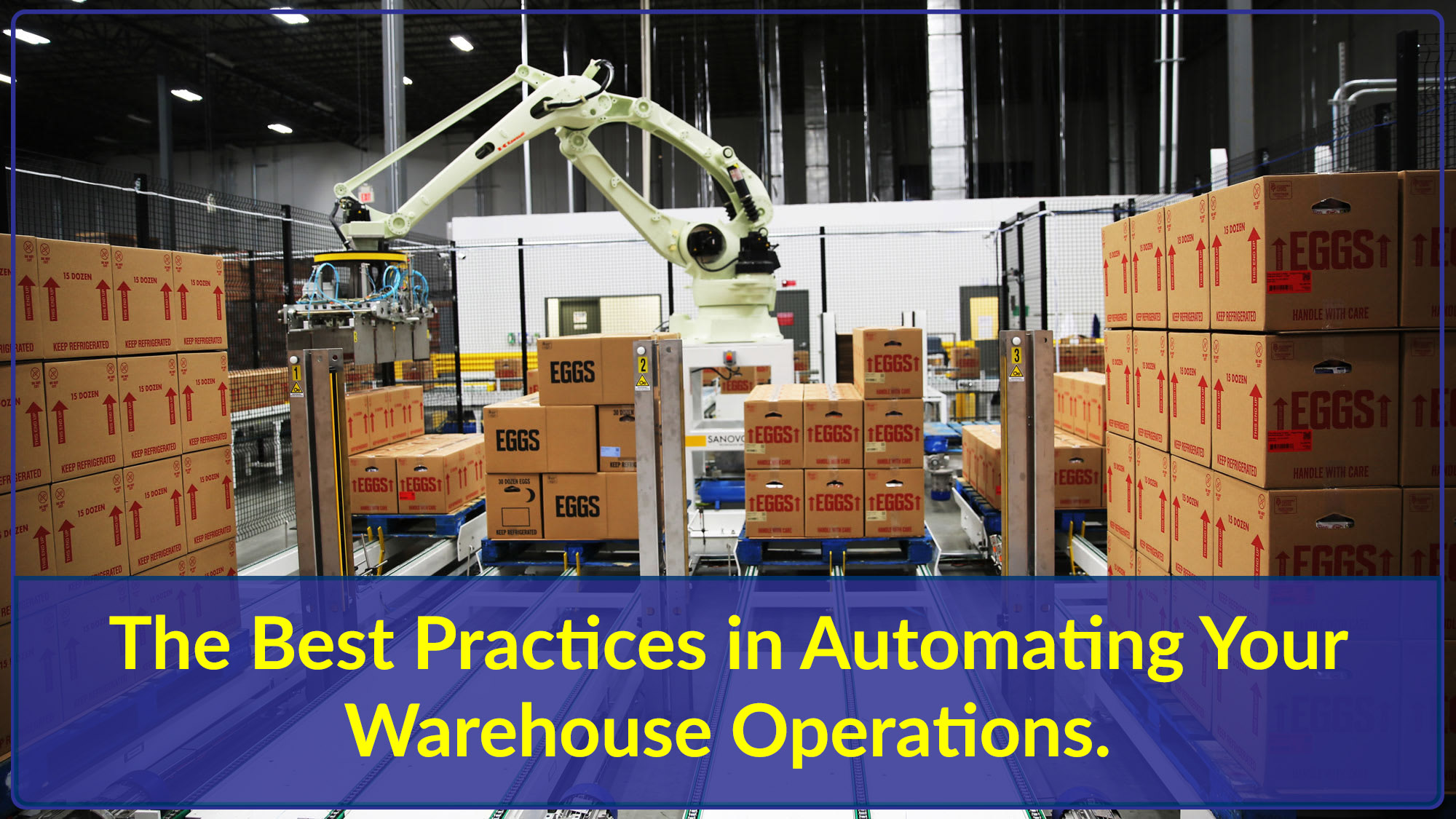The Best Practices in Automating Your Warehouse Operations
If you are looking at little automation in your warehouse this is the best practice to lookout. If you are automating your warehouse in terms of conveyors or sorters or even robots it would make a lot of sense to mark your SKUs as conveyable or not conveyable, sortable or non-sortable and as the robots coming everywhere robotable or non-robotable. The last thing you want to do is make a small product or a big product ride the conveyor. Technically all conveyors have certain requirements mentioned, such as the box size of certain length, width, and height. The carton’s matching these requirements can only convey through the conveyor. The same requirements for sorting the products using sorter. It could be whatever type of sorter that you might have big sorter or small sorter and even robots. The only difference between robots and conveyors is the businesses. Before it used to change every five to seven years and now the changes happening even faster. Imagine either your volume picked up or you’re handling much bigger volume because your business has picked up or your business is changing. Before it used to be all retail now it’s all ecomm, before you used to handle all cases, but now you are handling units, which means your business have changed. That means you have to change your process and your layout has to change.
If you had these roller conveyors, imagine ripping that off and then redoing the layout completely. That’s a lot of work and it’s very expensive to take it off and then put it to construct in a new manner. You may not be able to reuse the same thing, you may have to buy brand new conveyor equipment. So all those things are the drawbacks with the old-school mounts fixed on the floor mounted, on the wall mounted, on the roof. Things have changed now and the robots are configurable, which means you can quickly configure, program, and change the way the robot works. I mean before it was going to let’s say from here to here and now when we need to change it, you can easily change it anyway. It could be a guided vehicle which goes around by scanning the barcodes on the floor or it’s doing something else completely automated like an automatic car or something like. A lidar based sensor reads the data and then it detects on obstacles and then finds the way and then keeps going. Robots are very easy to reconfigure and reprogram. They can be made to go in a completely different direction or to make it do something else. That’s the appeal of robots and also the cost of all these sensors and the electronics have come down significantly which makes the robots and affordable option in a DC environment.

Also the labor shortage is a much bigger problem that’s making these robots come fast as well. Having said that it makes a lot of sense to mark your items as a non-conveyable, conveyable, non sortable, sortable, robotable, and non-robotable. That means whenever you’re processing those items in your WMS processes you can mark that off and then it can be isolated as a separate carton or a separate thing or you can remove that or even it could be a separate order. Depending on how you are receiving that order you could split that and process that separately and then ship that separately or just isolating makes everything so much easier.
So efficiency wise you’re still doing all the other things efficiently for your conveyable products, sortable products, robotable products but the non conveyable, the non-sortable and the non-robotable get isolated and then processed separately. You could have a non conveyable isle you could have a non-sortable isle and also a non-robotable aisle and have all those items slotted there. You can then process them separately, which makes it easy because it’s not coming in the way of the regular items and then creating a bottleneck. Isolating and processing them separately makes it easy and your regular items still go through the regular efficiency. That’s something to think about so hopefully this is helpful and please share your thoughts and share your comments in the section below.
Do subscribe to our YouTube Channel.


 1. Increases EPP, using budgeted line items.
1. Increases EPP, using budgeted line items. Millennial friendly technology, less onboarding time, very easy adoption – touch screen keypad, and 43% of Millennials already use IOS, familiar with Facetime, 85% of Millennials aged 18-24 own devices and 86% aged 25-34 own them, consume a lot of video on their smartphones, and are highly comfortable with this medium, they understand and like apps.
Millennial friendly technology, less onboarding time, very easy adoption – touch screen keypad, and 43% of Millennials already use IOS, familiar with Facetime, 85% of Millennials aged 18-24 own devices and 86% aged 25-34 own them, consume a lot of video on their smartphones, and are highly comfortable with this medium, they understand and like apps.